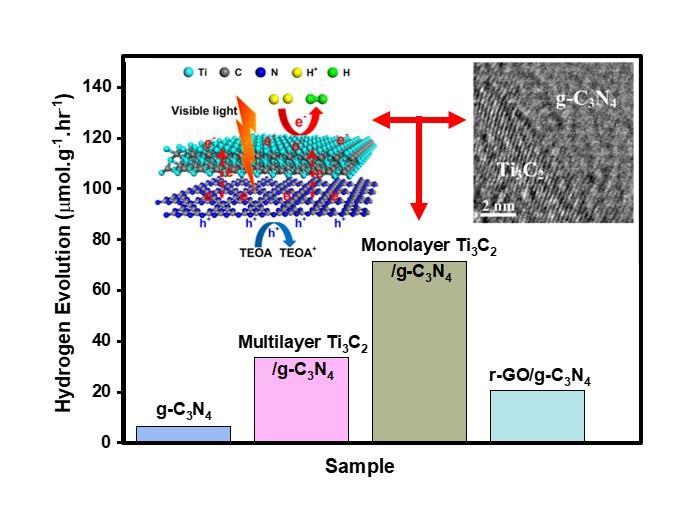
Interfacing a monolayer of Ti3C2 to g-C3N4 nanosheets greatly enhances the photocatalytic rate of water splitting for solar hydrogen production as compared to multilayer Ti3C2 and reduced graphene oxide (r-GO).
Scientific Achievement
Stacking a monolayer of Ti3C2 MXene to g-C3N4 greatly enhances the photocatalytic efficiency of water splitting for solar hydrogen production over g-C3N4 alone.
Significance and Impact
Exploiting the unique electronic properties of a new family of metallic 2D MXenes opens a strategy in tuning the photocatalytic efficiency for noble metals free harvesting solar energy into fuels.
Research Details
– The 2D/2D heterostructures were built via electrostatic self-assembly of monolayer Ti3C2 with g-C3N4 nanosheets. – The 2D/2D monolayer heterojunction of Ti3C2/g-C3N4 increases photocatalytic H2 production rate more than 10 times than that of pure g-C3N4. – The large work function and the shorter charge transfer distance in 2D/2D monolayer heterojunction are the reasons for the improved photocatalytic performance .T. Su, Z. D. Hood, M. Naguib, L. Bai, S. Luo, C. M. Rouleau, I. N. Ivanov, H. Ji, Z. Qin, and Z. Wu, “2D/2D Heterojunction of Ti3C2/g-C3N4 Nanosheets for Enhanced Photocatalytic Hydrogen Evolution," Nanoscale 2019. DOI: 10.1039/c9nr00168a




